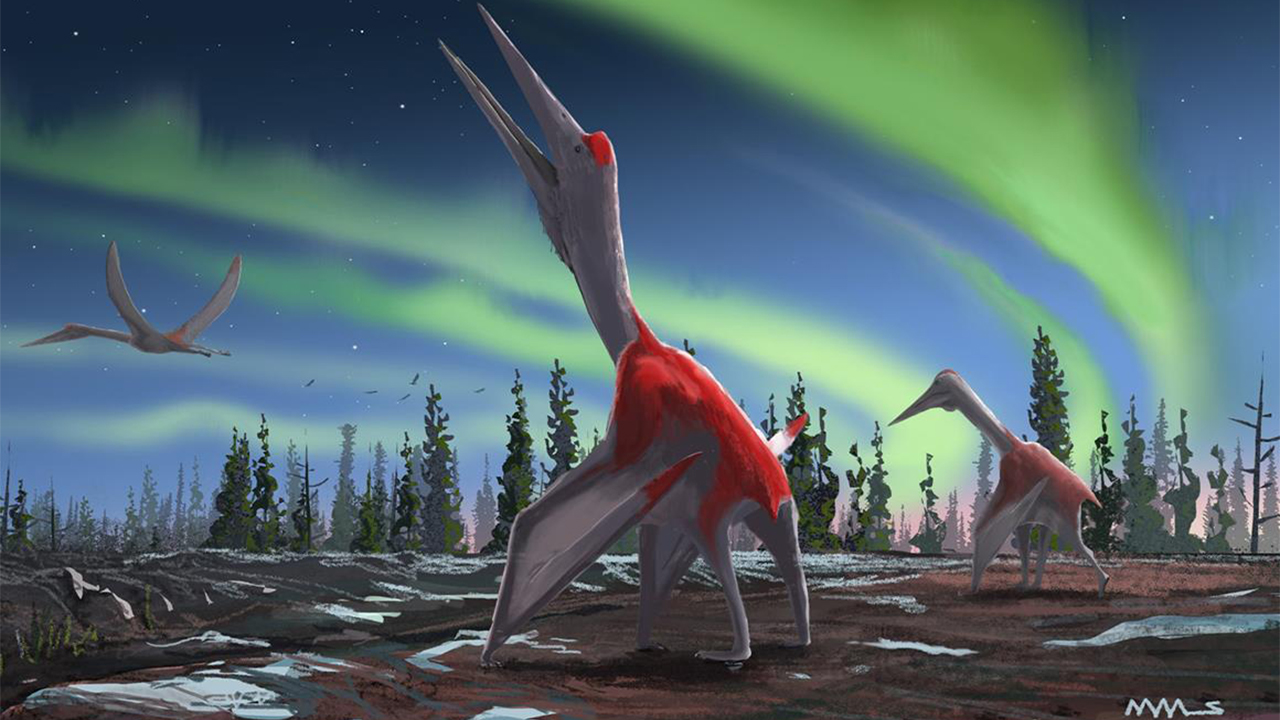‘Frozen Dragon of the North’: Scientists identify previously unknown species of giant flying reptile

‘Frozen Dragon of the North’: Scientists identify previously unknown species of giant flying reptile
Scientists have identified a new species of giant flying reptile, which they call the Frozen Dragon of the North, according to the University of Southern California.
LOS ANGELES - Scientists have identified a new species of giant flying reptile, which they call the “Frozen Dragon of the North,” according to the University of Southern California.
The creature soared over what is now North America, according to the university. The new species is similar to the largest pterosaurs known, but “key characteristics gleaned from a cache of bones unearthed in Canada show it’s actually part of a new genus and species,” the university said.
Scientists call it Cryodrakon boreas, or “Frozen Dragon of the North.”
“These are among the most popular and charismatic of all fossil animals,” said Michael Habib, assistant professor of Integrative Anatomical Sciences at the Keck School of Medicine of USC.
“They have been inspiration for countless movie monsters, they were critical parts of global ecosystems worldwide during the Age of Dinosaurs, so they are key to understanding the ecology and extinctions of that time, and, just like flying animals today, they could carry important clues about how animals at the time responded to major changes in climate,” said Habib, who is also research associate at the Dinosaur Institute of the Natural History Museum of Los Angeles County.
The findings were reported Monday in the Journal of Vertebrate Paleontology.
The researchers behind the new study said the new species could account for some of the previous discrepancies in pterosaur remains from the Canadian badlands and around the world.
“This type of pterosaur (azhdarchids) is quite rare, and most specimens are just a single bone. Our new species is represented by a partial skeleton. This tells us a great deal about the anatomy of these large flyers, how they flew, and how they lived,” Habib said.
The scientists concluded from their findings that the Cryodrakon boreas was about the same size and looked similar to Quetzalcoatlus, “but was likely heavier and more robust.”
“That’s an important finding because it challenges classic reconstructions of these animals as ultralight soaring specialists,” the university said. “Instead, Cryodrakon may have been extra-muscular ground hunter that used flight to burst away from danger.”
Habib said, “This particular group of pterosaurs includes the largest flying animals of all time.”
“Their anatomy holds important clues about the limits of animal flight and may be important in the future for biologically inspired mechanical design for flight,” he said.

